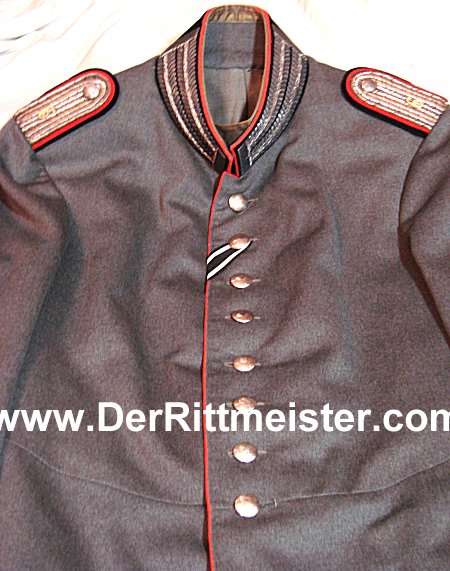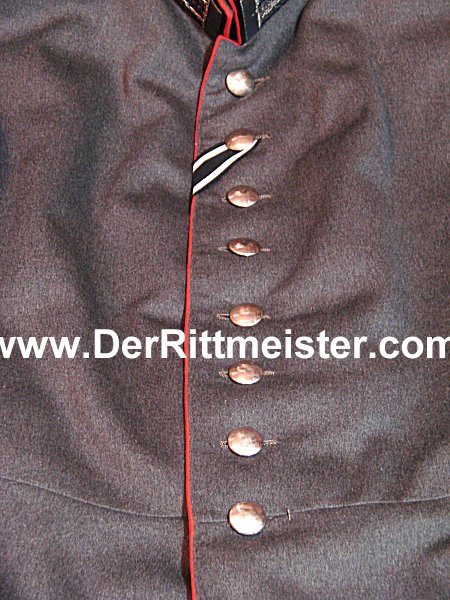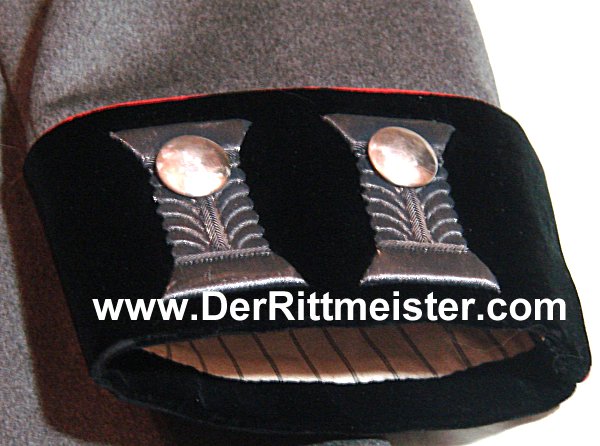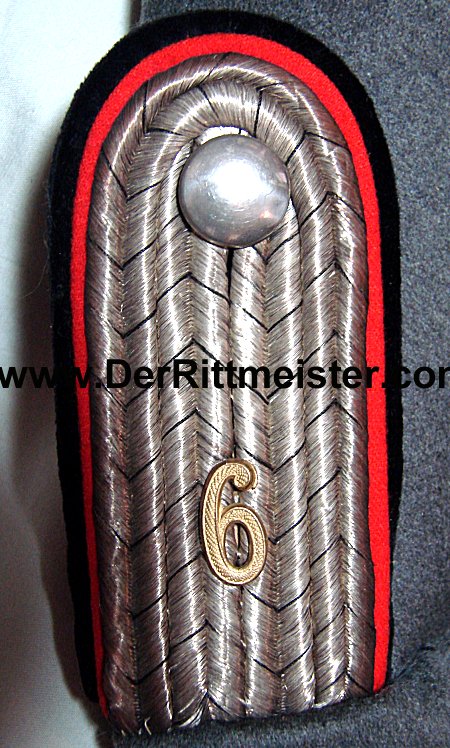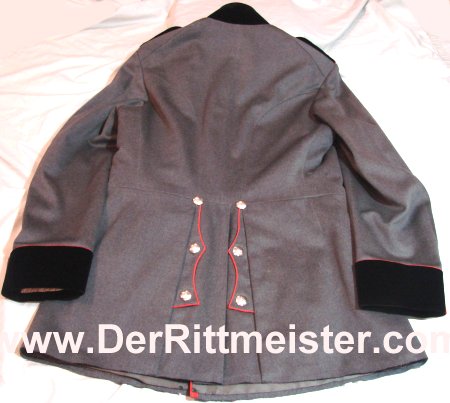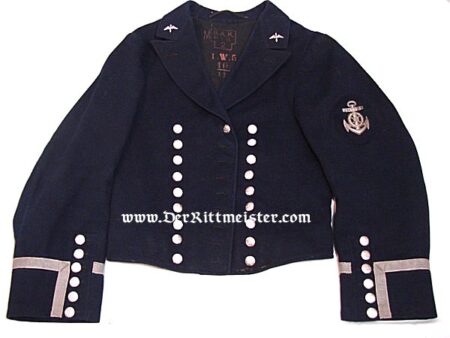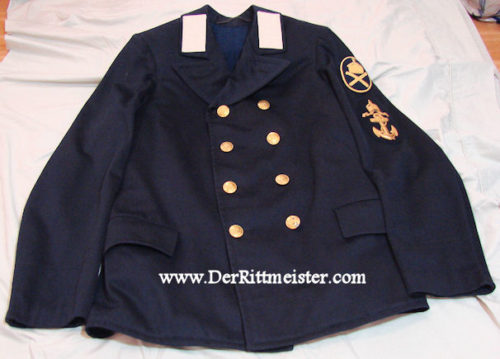Description
This is a first class tunic of the M-1915 Feldgrau Friedensuniform (rock) variety. It is a very rare tunic. The M-1915 Friedensuniform was first authorized on 21 September 1915 by the War Ministry. Feldgrau tunics first entered into service in various units beginning in 1907. As WW I neared the end of its first year, the German Army’s rapid expansion placed a major strain on the resources needed to produce stockpiles of blue uniform material. The need for standardization was obvious. It was this mandate in September 1915 that created the Friedensuniform (Future Peace Time Uniform). The uniform style was quite ornate. Not long after the change had been ordered, it was abandoned for a simpler, easier-to-produce tunic that was less expensive. The M-1915 Friedensuniform was the high water mark for Imperial German feldgrau tunics. In his excellent book The German Army in the First World War, Jürgen Kraus describes the uniform (with photos), on page 158. We are very pleased to offer such a tunic to you today. It is for a Leutnant from Schlesisches Pionier-Bataillon Nr 6. The unit was founded in 1816 and garrisoned at Neiße. It was attached to the VI. Armeekorps. The tunic’s body is a buttery, high-quality wool in the classic feldgrau color. It sports a single row of eight silver-toned buttons. Red piping runs down the center, appears at the collar, and on the cuffs. The very elaborate collar boasts black velvet over which massive silver kragenspiegel are laid. The patina on the silver bullion is most impressive. The same theme is carried forward on the cuffs. Each cuff has two silver bullion kragenspiegel. In turn, each kragenspiegel features a silver-toned button attached to it. As with the collar, the kragenspiegel are laid over immaculate black velvet. The second buttonhole from the top has the ribbon for the 1914 Iron Cross 2nd Class in it. No loops appear on the left breast for any other decorations or badges. The shoulder boards are for a Leutnant and are sewn in. Each board is trimmed in red and black for a Pionier-Bataillon, and bears the numeral “6″ for Schlesisches Pionier-Bataillon Nr 6. A smaller silver-toned button is mounted on each shoulder board. The tunic’s reverse has red piping at the vent flap, with a further six silver-toned buttons on the flaps (three per side). The tunic’s interior is in excellent condition, and is fully complete. To our eyes, it appears to be a heavy silk weave that stands up to wear more easily. The tunic exterior’s condition is VERY fine. A couple of small moth nips may exist, but you have to look hard to find them. Some minor moth tracking appears on the left sleeve, which is hardly noticeable. Without a doubt, this is one of the finest feldgrau tunics I have ever offered. It was manufactured at a time when Germany still had the resources to produce such excellent quality.

